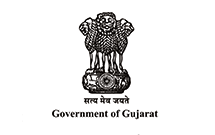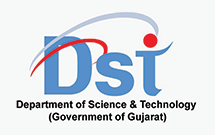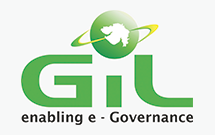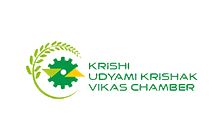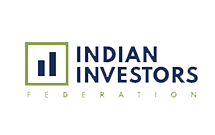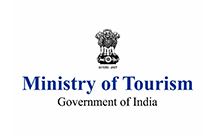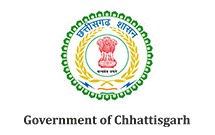a growth engine for 2047
India has a large 7.9 million registered Micro, Small and Medium Enterprises (MSMEs) base. The MSME Industry segment contributes 33% of the Country’s GDP and generates over 120 million jobs across industries and regions in the country contributing towards wealth creation at the grassroot level.
The contribution of #MSMEs has been unparalleled in India's growth story, making significant contribution to national GDP & will be instrumental in realising the #India vision 2047 of Atmanirbharta
There is no doubt that MSMEs play a critical role in Nation Building and growth of the economy. It is necessary that the support to this segment is accelerated, and government targets its ease of doing business initiative towards MSMEs. The targeted government policies can be a major catalyst in guiding MSMEs to the desired sectors of the economy to fuel growth of the economy. This could be done by framing conducive policies, offering incentives and most important, removing the on-ground hurdles, easy access to credit being a prime example. Schemes such as CGTMSE & ECLGS have helped many MSMEs access formal credit with ease
No doubt there is a long road to traverse but it is also beyond doubt that with entrepreneurship, innovation and agility at its core, the MSME sector can not only play a vital role in making India a US$5 trillion economy in the next five years but can also become a growth engine for making India a developed country by 2047.
15th November - 2024 , The Lalit, New Delhi, India
Development of nations, advancement of societies and progress of mankind is often weighed quantitively through the parameters of infrastructural development. Be it the signs of globalisation or mapping governance priorities, the visual impacts are often in terms of buildings built, roads laid, operational airports, with contemporary indicators like pipeline network laid, digital connectivity infrastructure amongst many others The infrastructure sector as the "backbone of the economy". The spending on infrastructure has gone up from Rs 4.12 lakh crore to Rs 5.54 lakh crore. The infrastructure sector is critical for propelling India's growth and enjoys intense focus of the government.
India targets $600 billion textile exports by 2047, aims to create $1.8 trillion domestic market.
India already has a sizeable industry here. India's textile market is expected to touch USD 250 billion in the next two years.
Technical textiles is a fast-growing sub-segment that finds its usage in an array of sectors. The end use application of technical textiles is widespread and seen in industries such as agriculture, construction, sports apparel, healthcare etc.
Technical textiles, a sunrise sector, has become even more relevant during the Covid-19 crisis when the global manufacturing have come to a grinding halt and the ban on export of critical medical equipment including N95 face masks and protective gears, have made imports to India nearly impossible. India was entirely import dependent for PPE kits.
From manufacturing 0 PPE kits in March, it soon rose to manufacturing 2.5 lakh a day in 60 days becoming the second largest manufacturer after China. Today, India stands to produce around 4.5 lakh PPEs and more than 1.5 crore masks a day.
Despite the economic slowdown and downturn in the overall demand for textiles due to Covid-19, the industry continues to be the second largest employer in India. By transforming a Covid-19 crisis to an opportunity, India has proven its ability to innovate and rise to the challenge with limited resources and time.
Technical textile accounts for approximately 13% of India’s total textile and apparel market and contributes to India’s GDP at 0.7%. There is a huge potential to fulfil a large demand gap as the consumption of technical textiles in India is still only at 5-10% against 30-70% in some of the advanced countries.
Therefore, it is even more essential for the government and industry to collaborate to boost technical textiles, a high value segment of this sector.
Contributing 7.1 per cent of India’s GDP, and expected to reach USD 251-283 billion by 2026.
Globally, Indian auto industry is the sixth largest by production.
The goal set by Prime Minister of India i to attain energy independence is linked to decarbonisation and presents a huge economic opportunity.
It would not be out of place to state that India’s transition to clean energy is a once in a lifetime economic opportunity. According to the International Energy Agency (IEA), India has the potential to become a world leader in renewable batteries and green hydrogen; that, along with other low carbon technologies, could create a market worth $80 billion by 2030.
India’s vehicle ownership is still minuscule if one counts the number of cars. In Delhi capital of India itself, for instance, it is estimated that roughly 21 per cent people own cars and some 40 per cent own motorcycles. The Census found that roughly 10 per cent of urban Indians owned a car. Thus, there is a huge market potential.
EVs and energy independence have the potential to propel India into the orbit of a developed nation when viewed from the perspective of a Net-Zero economy.
India is among the leaders in the global pharma industry, being the third-largest producer in terms of volume and at the 10th position in terms of value. A significant raw material base and availability of a skilled workforce have enabled India to emerge as an international manufacturing hub. It is one of the top manufacturers of generic medicines worldwide, with 20 per cent share in their global supply.
India is emerging as the epicentre of vaccine manufacturing. Top pharma companies in the country are supplying basic and advanced vaccines to nearly 150 nations. The state-of-the-art manufacturing facilities in India, that enjoy government support, have the largest capacity globally for manufacturing WHO-prequalified vaccines.
Vaccines and Medicine Manufacturer-In the 100th year of Independence, India will also be seen as the largest producer of Medicines and vaccines across the world.
The Government in the past has created production capabilities in defence in form of Ordnance Factories and Public Sector Undertakings to cater to the requirements of our Armed Forces. However, there is a need to enlarge the role of Indian private sector as well to develop capabilities and capacities for production of various defence equipment’s. Our Prime Minister has taken a very important initiative in form of Atmanirbhar Bharat in Defence and Make in India to promote and encourage domestic manufacturing of various items. The requirement for domestic production of defence equipment is more than for any other sector because it will not only save precious foreign exchange but will also address the national security concerns. There is a big opportunity in Indian defence sector for both domestic and foreign investors. Opportunities for machine tools and cutting tools industry, the Indian machine tools industry is strategically important to the defence industry as this industry offers expertise in areas of post-sales support and its ability to bridge the technological gap every year.
Manufacturing of Defence Equipment -In the field of defence, India is not self-reliant and is dependent on many foreign countries. In 2047, India will be an independent country and manufacture its own defence equipment.
Preamble :
We believe that the growth and development agenda for the next few decades should not only focus on economic progress to cater to rising aspirations of young Indians but also in achieving that in a sustainable manner. To this end, the technical and managerial capabilities of public and private sector, under the comprehensive framework of Digital India, can be leveraged to take India into the digital age.
The following deliberations could be taken up under the above:
ICT4SD Academic
Original contributions from researchers describing research contribution should be review and to share their work in all areas of Smart and Innovative trends.
ICT4SD Industry
The concern about sustainability has arisen due to the overuse of natural resources and the increased use of energy consumption over the last decades. Information communication technologies (ICT) has the potential to address the three main aspects of sustainability (people, planet, profit) and therefore, organizations have initiated a sustainable development by integrating ICT within their business activities.
The forward-thinking innovation of today and what we project to be trending tomorrow.
ICT4SD The Government
Information and communication technologies (ICTs) and related telecommunication and other digital networks are considered to be a major driving force of building information societies & economies and are increasingly recognized as a new factor in improving existing governance practices. For those transition, countries that have managed to develop relatively stable democracies, the main benefit of technology-based e-governance systems is seen in the building of a full-fledged open information society by providing a wide range of on-line public services, in fostering mutually effective public-private partnerships in gaining visible economic gains, in enhancing representative democracy by overcoming low levels of electoral participation, and – most importantly – in fundamentally changing present governance practices and models.
At the local level, e-governance and the appropriate use of ICT can enhance and support economic and social development, particularly in empowering officials and municipal representatives, ensuring linkages, networking, timely, efficient, transparent and accountable services. E-local governance means exploiting the power of ICT to help transform the accessibility, quality and cost-effectiveness of public service and to help revitalize the relationship between customers, citizens and the public bodies who work on their benefits.
Preamble :
Global Privacy and Data security problems, there is increased emphasis on, and investment in, the security of cyber infrastructure. Data powers the information economy and the risks associated with it continue to increase rapidly. Data breach, identity theft, loss of customer trust—these are the threats to organizations of all sizes, in all sectors.
Protection of critical infrastructure operations has emerged as a major challenge. This is because trillions of dollars move through the networks every day involving a broad range of activities, including e-commerce, e-governance, travel, hospitality, health care, and general communications. Electricity distribution, water distribution, and several other utility services are based on ICT infrastructures. The defense sector relies heavily on electronic systems.
The following deliberations could be taken up under the above:
India is one of the fastest growing markets for electronics. The demand is projected to reach USD 400 Billion.
The electronics industry is an expansive and rapidly growing sector with a multitude of applications. Electronics are acknowledged as a ‘meta-source’ globally and enable an increase in productivity, boost infrastructure development, improve the efficiency of service dispensation, and revolutionise society. The use of semiconductor chips is ubiquitous in all electronic instruments aiding in improvements and evolution in innumerable applications such as communications, computing, health care, military systems, transportation, and clean energy. Semiconductors are vital for sustaining state-of-the-art technology and are forecasted to play an even enhanced role with the development of new technologies like artificial intelligence (AI), 5G, Internet of Things (IoT), smart cars and factories, robotics, etc.
“The country's own consumption of semiconductors is expected to cross $80 billion by 2026 and $110 billion by 2030, and the government is investing heavily in skilling and training young Indians for the needs of the 21st century”.
The following deliberations could be taken up under the above:
The following deliberations could be taken up under the above:
MSME Ministry, Micro Small and Medium Enterprises (MSMEs) -Manufacturing Enterprises and Service Enterprises. Start-ups, Exporters & Importers, SIDBI, Banks and other relevant participants.
| SECTORAL TALKATON @GRAND BALL ROOM | |
|---|---|
| 1415 Hrs. – 1515 Hrs. |
MICRO, SMALL & MEDIUM ENTERPRISESa growth engine for 2047 |
| CHIEF GUEST |
|
| GUEST OF HONOR |
|
| GUEST OF HONOR |
|
| ESTEEMED GUEST |
|
| TALKATION HANDLED BY |
|
| Question - Answer Session | |
|---|---|
| Concluding Remarks and Vote of Thanks | |
| Networking |
|---|
| MEDIA BITE & DEPARTURE HON’BLE MINISTERS & GUEST |




